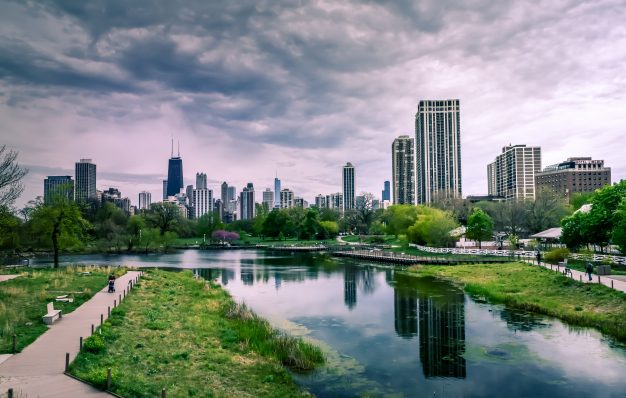Urban Green Spaces (UGS) are vegetated open spaces that provide a multitude of ecological functions that are essential for the physical and mental well-being of the citizens as well as for the urban environment. However, land is an extremely competitive resource in cities that are struggling to sustain the ever-growing urban population and UGS are constantly under threat of urban encroachment. Even the well spread out cities are pressured to densify by the more commonplace ‘sustainable dense urban neighbourhood’ approach that in turn, increases the pressure on open spaces such as UGS. But UGS are lacking both by quantity and quality in most cities to support the need of the citizen. Their shortage and inadequacy of UGS were made obvious during the Covid-19 pandemic when the quarantine restricted the mobility of the urban populace and made UGS an essential, and often time, the only outdoor element in everyday city life. As well as lacking in quality and quantity, the pandemic and the resulting extended quarantine also pushed forward the inherent social issues with UGS; such as their unequal distribution, access, ongoing privatisation, ‘green gentrification, etc. The session focus was on the multifaceted challenge for UGS management and governance and how to accommodate the growing necessity of UGS in cities that are heightened in a world with Covid-19.
Key Takeaways
- In the circular land use system, brownfields are not considered as a waste but as a valuable resource in the transition from abandonment to reuse.
- These sites should be remediated using Nature Based Solutions (NBS) such Gentle Remediation Options (GRO) since they are low-cost and sustainable options.
- Urban greenspaces (UGS) are fundamental for urban wellbeing by providing the citizens with numerous ecosystem services (ES).
- The creation of Urban Greenspaces (UGS) in the brownfields of Langrea, a shrinking city in Spain, can be a transitory land use convenient to recover soil ecosystem services, to favour the potential appearance of new economic activities, and to modify social perception.
- In the case of Kumasi landscape in Ghana, the governance of the green and blue infrastructures (GBI) through ‘Landscape approach’ strengthens the position of vulnerable smallholders through secure land tenure in collaborative initiatives built upon a collective acknowledgement of the importance of natural landscapes to socio-economic development and environmental sustainability.
The accelerating need for Urban Greenspaces (UGS) in cities and how to best accommodate it: Potential for Urban Brownfields and Gentle Remediation Strategies (GROs)
Shaswati Chowdhury, Paul Drenning (PhD student), Yevheniya Volchko (Researcher), Jenny Norrman (Associate Professor)
Chalmers University of Technology (Gothenburg, Sweden)
Department of Architecture and Civil Engineering
“Gentle Remediation Options (GRO) have potential to improve biological, chemical and physical soil properties, enhance soil health, sustain plant productivity and be used to transform brownfields to greenspaces.”
Exploring land governance strategies for inclusive and sustainable development in the Kumasi landscape in Ghana
Muhil Nesi
Planbureau voor de Leefomgeving (PBL- Netherlands Environmental Assessment Agency)
Janssen Calvelo
Erasmus University
(Rotterdam, the Netherlands)
Institute of Housing and Urban Development Studies (IHS)
The Kumasi landscape in Ghana is characterised by a juxtaposition of customary land governance and numerous contemporary land-use activities. The governance of green and blue infrastructures (GBI) is the core theme of this research, as they connect various actors/stakeholders across the rural-urban spectrum, and their quality affects progress towards sustainable development, securing local livelihoods, climate-change mitigation and biodiversity conservation. The research examines spatial, institutional and socio-economic dynamics that drive peri-urban land-use change. The significance of this project is embedded in the threat to GBI and the uneven distribution of development benefits produced by urban spatial expansion. In this context, the ‘landscape approach’ concept bears relevance as it aims to involve the interests of all stakeholders in landscape planning, while trying to streamline and balance multiple, often competing, land-use demands and actor objectives through an iterative and participatory process. The approach also emphasises on strengthening the position of vulnerable smallholders through secure land tenure in collaborative initiatives built upon a collective acknowledgement of the importance of natural landscapes to socio-economic development and environmental sustainability. In light of the COVID-19 pandemic, integrated landscape management provides an opportunity for the Kumasi landscape to address the urgent need for natural habitat preservation coupled with sustainable agricultural production and liveable human settlements.
Brownfield remediation and planning in Coal Regions in Transition
Prof. José Luis R. Gallego, Dr. Diego Baragaño
University of Oviedo (Spain)
Institute of Natural Resources and Territorial Planning
“Urban decline is especially significant in cities of coal regions in transition, where the profusion of abandoned industrial sites (brownfields) demands environmental and urban planning measures. These sites should be remediated using Nature Based Solutions (NBS) such as bio & phytoremediation or soil stabilization, since they are low-cost and sustainable options.”

